#toei getter
Text

I love Toei Hayato and his Harmonica
53 notes
·
View notes
Text
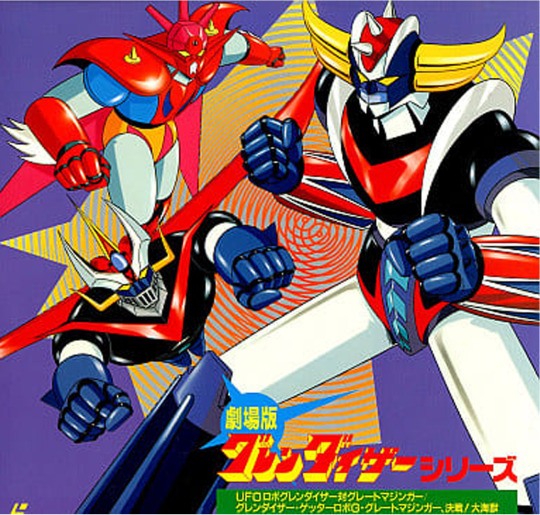
劇場版グレンダイザーシリーズ
#Go Nagai#Ken Ishikawa#Grendizer#Great Mazinger#Getter Robot G#UFO Robot Grendizer tai Great Mazinger#Grendizer Getter Robot G Great Mazinger: Decisive Battle#Toei Manga Matsuri#laser disc
40 notes
·
View notes
Text
Randomly thinking about how the Getter team is obviously human, they are *not* normal but they are still humans who can die, and we see in most series at least one cast member is always killed off-
But sometimes in my mind I deny that they can actually die. Like, the amount of shit Ryoma and Hayato have survived is fucking insane, especially when you consider the only canon they die is the manga timeline which even THEN saids a lot.
Ryoma was absorbed into the Getter which is still a death but also because of how emperor is he’s most DEFINITELY been cloned by now even if we don’t see him, and Hayato only really got confirmed dead in arc anime, but who’s to say now that he’s been absorbed into the Getter too now technically the same wouldn’t happen to him? And this also doesn’t even count it happened for Musashi even if it’s the most fucked up.
But putting aside the insanity of the manga timeline for a second, most of Ryomas fate don’t even end up with him dead even if you could argue hes in purgatory in a sense, the arma ending is more vague but he likely lived but new? As painful as it is he is still ALIVE and kicking ass even if we only see it for a frame.
At this point the Getter Team is immortal but not in the traditional sense, just immortal in “the narrative will keep me alive in various different ways and my god even if I suffer I’ll make use out of it” way.
#meg text#getter robo#ryoma nagare#hayato jin#i don’t know what came over me to say this instead of the other shit in my head#but I’m glad this is a getter tumblr post to exist now#but seriously like ryoma and hayato really are two different spectrums of being alive by the narrative#ryoma is “I’m too angry to die because of the narrative and I’m gonna fucking fight it even if it’s pointless”#and hayato is “the narrative won’t let me fucking die I’m sad”#and musashi just- haunts the narrative#the other characters really don’t get to this level cause go team only real fucked up fate is the manga#Toei arma and neo are good endings for them but that could never happen to OG trio ever#arc team ending up in the air and who knows if will ever get a au version of them ever but at least all the team is there#The only good ending the OG boys get is like- toei and Neo but even still musashi fucking dies😭#the rule of thumb is either one of them has to die all but hayato has to die Ryoma sacrifices himself to keep everyone alive#or arma ending where they go out together which ig you could count that as a bittersweet end (but musashi is still DEAD)
19 notes
·
View notes
Photo


microorganism
Reblogs > Likes
24 notes
·
View notes
Text
Toei's Mazinger Z is so bizarre to me, it doesn't feel at all like Nagai's manga and also for 1972 how was some of this acceptable? But it's also funny because after this, their Devilman, Cutey Honey, and even his co-created with Ishikawa series Getter Robo animes everyone was rushing to make something in those genres be BETTER. Like seeing the awful, boring, misogynist writing of these male dominated shows in the writing room get pushed out by stuff like Robot Romance, Gaiking, Raideen, Majokko Megu-Chan, Lalabel, Minky Momo, and adaptions of these aforementioned properties like the Devilman OVAs, Shin Cutey Honey, Mazinger Edition Z, Getter Robo Armageddon being leagues better than the original shows that aired alongside the manga runs.
Toei's Mazinger Z is so bizarre to me, it doesn't feel at all like Nagai's manga and also for 1972 how was some of this acceptable? But it's also funny because after this, their Devilman, Cutey Honey, and Getter Robo animes everyone was rushing to make something in those genres be BETTER. Like seeing the awful, boring, misogynist writing of these male dominated shows in the writing room get pushed out by stuff like Robot Romance, Gaiking, Raideen, Majokko Megu-Chan, Lalabel, Minky Momo, and adaptions of these aforementioned properties like the Devilman OVAs, Shin Cutey Honey, Mazinger Edition Z, Getter Robo Armageddon being leagues better than the original shows that aired alongside the manga runs.
1 note
·
View note
Text
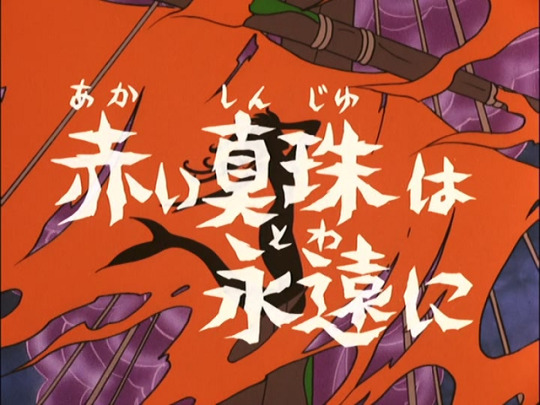
Let's jump into some trivia for Cutie Honey episode 12: A Red Pearl is Forever.
Screenwriter: Susumu Takaku
Art Director: Eiji Ito
Animation Director: Shingo Araki
Director: Hiroshi Shidara
The creative team behind Cutie Honey sure love James Bond. The title of this episode is a spoof of the 1971 film Diamonds are Forever.
This episode originally aired on January 30th, 1973 but was later shown in theaters as part of the Toei Manga Matsuri on March 16th, 1974. Also known as the Toei Animation Festival, this was a film festival created by Toei Animation to showcase some of their popular series during seasonal breaks in the school year. The festival not only included original films but “theatrical versions” of selected episodes from their popular series as well.
The line-up for the Spring 1974 festival featured:
Yaemon The Locomotive
Eye-Popping 3-D Movie: Inazuman
Kamen Rider X (Theatrical version of episode 3)
Mazinger Z vs. Dr. Hell (Theatrical version of episode 57)
Limit Miracle Girl (Theatrical version of episode 5)
Cutie Honey (Theatrical version of episode 12)
Reportedly the theatrical version of episode 12 was going to be included as an extra for the original Cutie Honey Premium DVD-Box but the proper materials couldn’t be sourced. The "theatrical version" would've had the episode cropped for widescreen viewing and probably would've omitted the title card and next episode preview.

This episode marked the first collaboration between director Hiroshi Shidara and animator Shingo Araki. Reportedly, both men were set to handle the last episode of Cutie Honey but were too busy at the time working on Toei’s next magical girl series: Little Witch Megu.
Shidara and Araki had such a fondness for Honey, they included her in Megu’s 27th episode, “The Curse of Scorpio.” The episode opens with Megu watching Misty Honey performing the Cutie Honey theme on TV. In that same episode, Non is seen wearing Hurricane Honey’s helmet.
Araki had previously included Seiji in the first episode of Megu, where he can be seen among a group of angry men. Araki would later include cameo appearances of both Seiji and Honey in UFO Robo Grendizer episode 50. That episode also featured characters from several previous Toei Animation series: Babel II, Devilman, and Getter Robo.

The haunting siren’s song heard throughout the episode is taken from Kosuke Onozaki’s musical score for the 1969 Toei Animation film, Flying Phantom Ship.

For some reason Seiji’s car has two different license plates. One says “Shinagawa 5132” while the other reads “Shinagawa Maichi 300F.”

Despite her name appearing in the opening credits, Noriko Watanabe does not voice Sister Jill in this episode. Haruko Kitahama fills in for her.
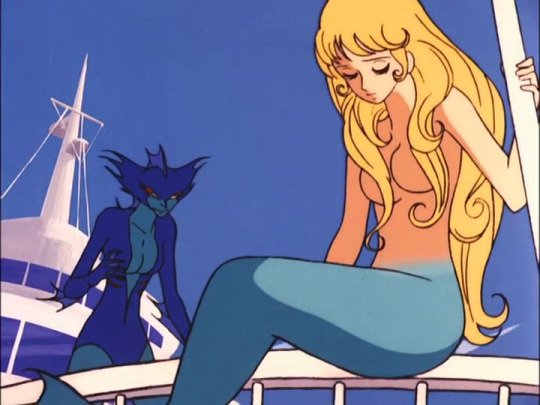
The mermaids in this episode are Malala (マララ) and Tylulu (チルル). Their names most likely come from Mitsuru Yokohama's manga, Chibikko Tenshi. The main characters of that manga were two angels named Malulu (マルル) and Tylulu (チルル). And those two characters probably got their names from Blue Bird, a play about two siblings, Mytyl (ミチル) and Tyltyl (チルチル).
Special thanks to ehoba.

Sea Panther was originally designed by Ken Ishikawa, who most likely drew inspiration of the Creature from the Black Lagoon. Her finalized design was done by Shingo Araki.
Sea Panther was voiced by Haruko Kitahama, who previously voiced other Panther Claw minions. Amusingly, Kitahama would go on to voice the Sea Witch and one of the older mermaid sisters in Toei Animation’s 1975 film, Hans Christian Andersen's The Little Mermaid.
Sea Panther is referred to as an “android”, though this is technically incorrect. An android is a mobile robot that is made to look like a human. For example, Honey is an android. She’s completely mechanical but looks like a human girl.
Since Sea Panther was originally a flesh and blood mermaid, she’s actually more of a cyborg, which is “a person whose physiological functioning is aided by or dependent upon a mechanical or electronic device.” However, since she was originally a mermaid and not human, I suppose the term “cyborg” is dubious.
The other agents of Panther Claw (aside from Zora and Jill) are also referred to as “androids” in the anime, although it’s unclear if they’re fully mechanical or not. In the original Cutie Honey manga by Go Nagai, he makes it a point to mention the members of Panther Claw are in fact cyborgs not androids. It could be that the anime producers got their sci-fi terminology mixed up.

The music that plays during the closing scene is Auld Lang Syne, a song typically played or sung during New Years Eve. It was probably included due to the fact this episode originally aired on December 29th, 1973.
That's all for episode 12!
8 notes
·
View notes
Note
Congrats on finishing shin Jeeg it’s great 👏 I’m currently rewatching it with my partner so I thought I’d let you in on some trivia regarding the entire Kyo lore reveal in ep 10. (Note this is info I got from a friend as it regards toei Jeeg, and I only read the manga before watching shin just to get to know hiroshi and miwa a bit)
Kyos entire character was ripped from a one off ep of toei Jeeg where a villain redeemed himself, expect it was tweaked a lot in shin. Mainly, himika and him were not aliens and rather from the underground, nor did he have a tie to the bronze bells or even have a sister. (From what I friend told me, they added that part in because he did have feelings for Miwa or something, but also probably did it just bc of the twist with Kenji regaridng this) not sure what his OG design looked like but I imagine it’s crust given toei but afaik other then this what they did take was Balba as well.
So yeah idk if you saw any Jeeg stuff prior esp given toei is pretty long but I thought I’d give this insight because the change is super interesting. (Also if you somehow didn’t hear lol, shin Jeeg was directed by Jun Kawagoe, man responsible for arma after ep 4, the other two getter ovas and the recenter getter anime. He is such a talented directed and I think putting aside new getter shin Jeeg is truly one of his best works)
Also sorry if this is lengthy again my autism went BRRRR because no one really gives shin Jeeg enough attention but it’s my second fav mecha after getter 😭
To start, congratulations! you are the first person to ever send anything to my inbox!
anyway-
I went into shin jeeg with as little info as possible. I saw like three episodes of Toei Jeeg beforehand to get aquainted with some characters and thats it
I was planning on watching Toei Jeeg casually (next to Getter Robo G) later this year so it will be exiting to run into the inspiration behind Kyou's origins among other things that went to inspire shin jeeg
Toei crust is the best kind of crust (also good to know Baruba is in the toei original! I liked the big kitty)
Thank you a whole lot for the trivia!! I apreciate it alot!
Dont apologize for the lengthy ask, I enjoy reading this kind of stuff a whole lot!
thank you!
(ima be real with you... I had no idea Jun Kawagoe directed this lmao
I keep accidentally running into his stuff and thats not going to stop any time soon
I do have Mazinkaiser SKL planed for this year lol)
6 notes
·
View notes
Text
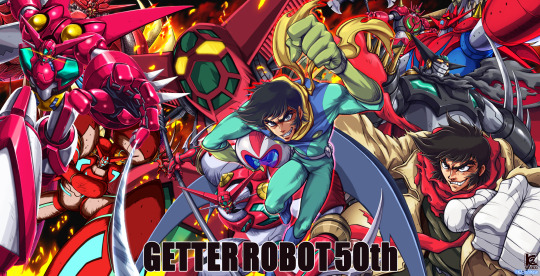
I fan giapponesi celebrano il 50º anniversario di Getter Robot, il primo robot trasformabile nella storia degli anime e dei manga
La serie di Toei Animation, Gō Nagai e Ken Ishikawa debuttò il 4 aprile del 1974 su Fuji Television.
Info:--> https://www.gonagaiworld.com/i-fan-giapponesi-celebrano-il-50o-anniversario-di-getter-robot-il-primo-robot-trasformabile-nella-storia-degli-anime-e-dei-manga/?feed_id=444018&_unique_id=660f153b5b6c5
#GetterRobot #GoNagai #KenIshikawa #ゲッターロボ50周年
2 notes
·
View notes
Text

Go Get-Machiens From Getter Robo Go (Toei)
2 notes
·
View notes
Text
An Abbreviated History of Mecha Addendum 1: Assemble the Forces!

Welcome to the first addendum to An Abbreviated History of Mecha! Today, we'll be looking at some of the media that came out in the 70's and before. A lot of the shows covered here are ones that were fairly big in their own right, especially when compared to the juggernauts of the era like Ultraman, Mazinger Z, and Getter Robo. What should also not surprise anyone with a lot of the shows listed here is that a bunch of the shows listed here have one Go Nagai and Dynamic Planning attached to them in some manner.
Because of course he is.
And I should note: unlike in An Abbreviated History of Mecha proper, the addendums will not be listing these entries in chronological order. This primarily because a) I need to get back into the groove of writing one-off posts (especially after The Devil That is Capitalism), and b) there are a lot of things that slipped out of the cracks, and I treasure my sanity.
Anyways, let's get down to brass tacks.
Daiku Maryu Gaiking (1976) and Gaiking: The Legend of Daiku Maryu (2005)

Daiku Maryu Gaiking (or Dino Mech Gaiking) is a 1976 giant robot series known for having plots take place in real world locations outside of Japan and also for featuring the first ever use of a carrier ship for the titular giant robot Gaiking. Gaiking is also somewhat infamous due to Toei trying their absolute hardest not to pay Go Nagai since he and Dynamic Planning created the series.
Toei would revisit Gaiking in 2005 with the release of Gaiking: the Legend of Daiku Maryu, which would feature a largely unchanged Gaiking and Daiku Maryu but feature a completely different main character.
Kotetsu Jeeg/Steel Jeeg (1975) and Kotetsushin Jeeg (2007)

Created by Go Nagai immediately following the success of Mazinger Z and Great Mazinger, Kotetsu Jeeg alongside its sibling series UFO Robot Grendizer would help to cement Nagai's legacy as one of the big mecha creators in the canon. Kotetsu Jeeg would receive a sequel in 2007, Kotetsushin Jeeg. The sequel was directed by Jun Kawagoe of Getter Robo Armageddon and Mazinkaiser SKL fame and features JAM Project performing the OP Stormbringer.
In other words, Kotetsu Jeeg beat Mazinger Z to the punch with the distant sequel. Or I guess you could say it beat Mazinger Z to the rocket punch?
Eh? Get it? No? Okay...
Planetary Robot Danguard Ace (1977)

Danguard Ace is one of the many mecha shows that came out in the wake of giants like Mazinger Z and Getter Robo. This series is noteworthy for being Leiji Matsumoto's first and only foray into the giant robot genre of mecha.
And hey, guess who's currently the owner of the Danguard Ace property?
It's Go Nagai and Dynamic Planning.
Abassador Magma (1965)

Ambassador Magma is a manga series created by Osamu Tezuka. It would also receive a tokusatsu series shortly after, with one of its big accomplishments being that it would be the first tokusatsu series aired in color. Specifically, it would beat honorary mecha show Ultraman to the punch by about six days.
Invincible Robot Trider G7 (1980)

Something to always keep in mind with the history of mecha is that Mobile Suit Gundam was not initially a hit. Invincible Robot Trider G7 serves as a good reminder of this, as it was an anime series produced by Sotsu (as in the very same Sotsu that also produced the original Gundam alongside Sunrise). Airing at around the same time as Space Runaway Ideon, Trider G7 would mark the beginning of giant robots being used in the deep recesses of space alongside Ideon.
Future Robot Daltanious (1979)

I couldn't find a good gif for Daltanious without watching the series myself, so we'll have to make do with this promotional image instead.
Future Robot Daltanious is a 1979 anime series that had Tadao Nagahama as its original director for its first couple of episodes before he left to direct the seminal Shoujo series The Rose of Versailles (a series that really should be treated as an honorary mecha series due to its influence on anime and manga as a whole). Even though he only worked on the series for about thirteen episodes and passed away before he could come back to work on it, Daltanious is still treated as one of his shows alongside Combattler V, Voltes V, and Daimos.
Daltanious is also an important series for those familiar with the Brave franchise, as Daltanious is the design inspiration for both Exkaiser and GaoGaiGar.
Super Robot Red Baron (1973) and Super Robot Mach Baron (1974)

Super Robot Red Baron would come onto the scene in 1973 as the giant robot tokusatsu shows would wane in abundance due to their expensive natures. Red Baron, and later its sequel series Mach Baron, would serve as a sort of swan song as it would also have to compete with one Mazinger Z for the hearts of children all across Japan. Giant robot tokusatsu wouldn't go away altogether though, and we'd see this with the next and arguably one of the weirdest entries both here and in the canon of comic book history.
Toei Spider-Man (1978)

In cooperation with Marvel Comics (yes really), Toei would put out their own version of Spider-Man towards the end of the 70's. Note that this is specifically in a post-Kamen Rider/Super Sentai world, so Spider-Man in this series is less "quippy teenager living up to his uncles words about great power and great responsibility" and more "the warrior of hell fighting aliens" (although, I'm pretty sure either Peter Parker or Miles Morales have fought the forces of hell at this point).
Also Spider-Man in the Toei series pilots a giant robot named Leopardon to fight giant alien monsters. This may be funny, but Leopardon is important because it is what inspires Super Sentai to include giant robots in all of their future shows.
Also, to the folks at Marvel. Sony and the production crew behind the Spiderverse films: when are we going to get Toei Spider-Man in the Spiderverse films?
Jumbo Machinder/Shogun Warriors

Image source: Shogun Warriors unofficial website
Finally, to round out today's post, how could I not mention the Jumbo Machinder line of toys. All jumbo machinder was was a line of toys based off of popular giant robot shows like Mazinger Z, Gettero Robo G, Brave Raideen, Gaiking, and many more (also Godzilla and Rodan had their own machinder toys). The toys all came with spring-loaded projectiles and were immensely popular with kids back in the day.
Mattel would eventually get the distribution rights to these toys, bringing them over to the US as the Shogun Warriors. Mattel would also ask Marvel Comics to write a comic series for the Shogun Warriors that would explain why all of these largely unrelated giant robots were working together.
Thank you for reading this addendum to An Abbreviated History of Mecha. Normally, I'd do a conclusion section, but I feel like I'd have to follow up with another Addendum post.
#anime and manga#mecha#an abbreviated history of mecha#anime history#daiku maryu gaiking#gaiking#kotetsu jeeg#steel jeeg#danguard ace#ambassador magma#trider g7#future soldier daltanious#toei spider man#spiderman#shogun warriors#super robot red baron#jumbo machinder
0 notes
Text
My friend just compared the artstyle in Mazinkaiser and Getter Robo Armageddon to my own
I’ve only seen these OVAs this year, but I’m flattered considering that when more recent series are influenced by Nagai and Ishikawa’s artstyles, I eat that shit up (Re:Cutie Honey gives off the exact same effect, despite having a different staff afaik due to being from Gainax & Toei instead of Brain’s Base - Shin CH, CHU and the 90s Devilman OVAs also do this to a lesser extent). Would definitely like to have these 3 OVAs influence my own art more
0 notes
Text
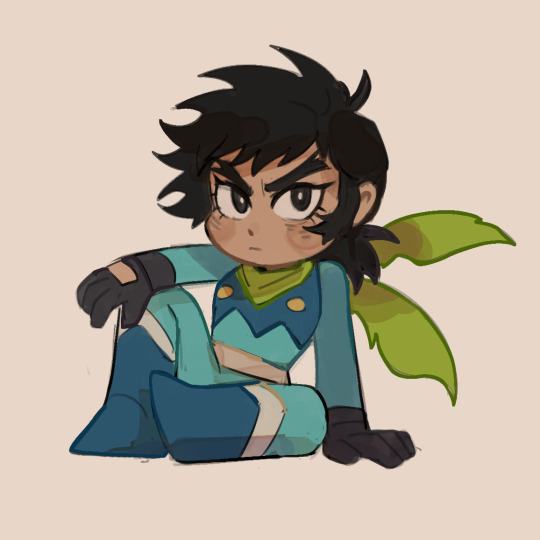


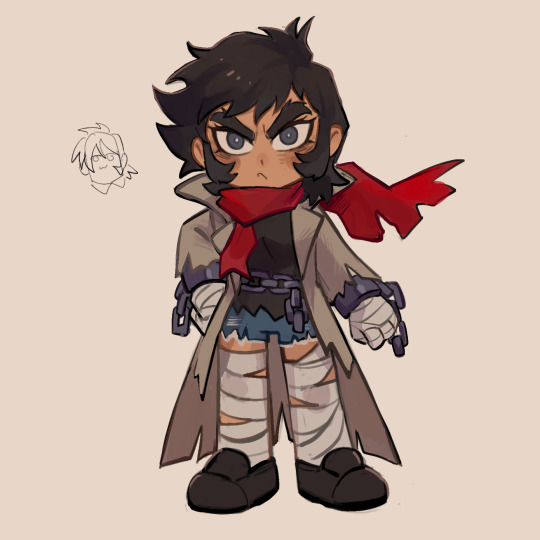
I like you! *hands you a bunch of chibi fem ryoma*
Edit: now with Arma Ryoma!
#getter robo#ryoma nagare#new getter robo#shin getter robo vs neo getter robo#toei getter robo#genderbend#shout out to toei for being the only one to have a different hairstyle compared to her og
46 notes
·
View notes
Text

MAZINGER THE MOVIE 1973-1976
#Go Nagai#Ken Ishikawa#Toei Animation#Mazinger The Movie#Mazinger Z#Getter Robot#Getter Robot G#Great Mazinger#UFO Robot Grendizer#UFO Robot Gattaiger#Devilman#Koji Kabuto#Akira Fudo#Tetsuya Tsurugi#Ryoma Nagare#Hayato Jin#Musashi Tomoe#Benkei Kuruma#Duke Fleed#Kazuhiro Ochi
66 notes
·
View notes
Text
if anyone more knowledgeable out there feel free to correct me on this but I had the funny realization that like- usually a team robot is either 3 or 5 people, sometimes 2. I’ve never seen it go over 5 and likely do to it just get too much at that point even if I imagine 6 people could work- but I’ve NEVER seen a 4 team robot and I can only assume it’s because the number 4 is considered unlucky in Japan, which now makes me think “imagine a 4 combiner robot who’s gag is they fucking suck ass” and I’m shocked no one ever thought of that concept.
#meg text#mecha rambles#i literally only thought about this regarding getter 4 jokes being made last night in my server#and because I’m biased I imagine the robot *is* like getter but the fourth member is like- the fucking weapon 💀#they only change when the leader changes and they got a off brand mini jet like toei michirus#they barely manage to win any fights ever but they always come back beaten up#and somehow the 4th pilots doesn’t die#I wish I cared to make ocs this concept is fucking hilarious
8 notes
·
View notes
Text

in the manga she was just there for the guys to fight over and then just gets absorb into getter by the time of shin getter. Armegeddon has her died to the invaders. Being the lost lenore to Ryoma and Hayato. At least in new getter robo she gotten a bigger role some what. And once again the lost lenore for Ryoma in devolution. At least the old toei anime had her a bigger role by using a support vehicle for the trio.
Most likely why in daikession I have her be in a getter despite she isn't that good of a character to use.
1 note
·
View note
Photo

-- Toei Getter Robo (1974) --
This show doesn’t deserve my bold text titles, nor a full review.
Fuck this show.
0 notes